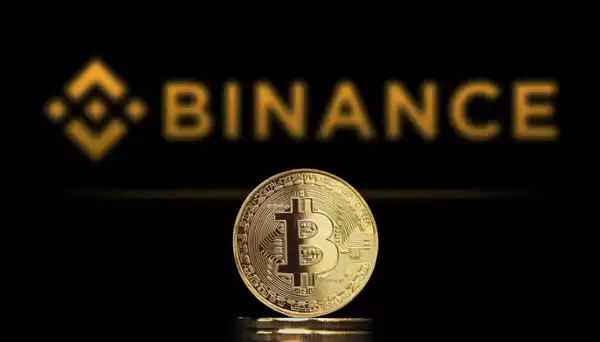-
 bitcoin
bitcoin $122288.232522 USD
0.16% -
 ethereum
ethereum $4480.662914 USD
-0.22% -
 xrp
xrp $2.962747 USD
-2.32% -
 tether
tether $1.000120 USD
-0.05% -
 bnb
bnb $1145.654223 USD
-2.07% -
 solana
solana $227.105217 USD
-1.67% -
 usd-coin
usd-coin $0.999548 USD
-0.02% -
 dogecoin
dogecoin $0.250875 USD
-2.04% -
 tron
tron $0.340654 USD
-0.49% -
 cardano
cardano $0.837968 USD
-2.52% -
 hyperliquid
hyperliquid $48.960449 USD
0.06% -
 chainlink
chainlink $22.049280 USD
-1.33% -
 ethena-usde
ethena-usde $1.000404 USD
0.02% -
 sui
sui $3.586212 USD
0.20% -
 avalanche
avalanche $29.894916 USD
-4.18%
How to do contract without losing money on Binance
Leveraging Binance's contract trading options requires a deep understanding of different contract types, risk management strategies, and trading psychology to minimize financial losses.
Nov 12, 2024 at 08:36 am

Binance, a prominent cryptocurrency exchange, offers a diverse array of investment options, including contract trading. However, navigating the complexities of contract trading demands a thorough understanding of its mechanics and potential risks. This comprehensive guide will equip you with the knowledge and strategies necessary to execute contracts on Binance while safeguarding your capital.
Step 1: Understand Different Contract TypesBinance offers Perpetual and Futures Contracts:
- Perpetual Contracts: No expiration date, allowing for prolonged positions and potential for significant gains. However, they carry the risk of funding rates, which can result in losses if not managed effectively.
- Futures Contracts: Expire at predetermined dates, limiting both profits and losses. They provide a more structured approach and are suitable for short-term trades.
Binance supports a wide range of cryptocurrencies for contract trading. Consider factors such as market liquidity, volatility, and your risk tolerance when selecting an asset.
Step 3: Leverage and Margin Trading- Leverage: Binance allows you to trade with borrowed capital, amplifying your potential profits. However, it also magnifies losses if the market moves against you. Use leverage cautiously.
- Margin Trading: Similar to leverage, margin trading involves borrowing funds for trading, providing greater flexibility but also increasing risk.
- Set Stop-Loss Orders: Determine an acceptable loss threshold and place a stop-loss order to automatically close your position if the market moves against you.
- Manage Positions: Regularly monitor your open positions and adjust them as needed to mitigate losses. Avoid holding positions overnight or during periods of high volatility.
- Use Trailing Stop-Loss Orders: Dynamically adjusts your stop-loss based on market movements, protecting profits while limiting losses.
- Hedging: Offset the risk of losses by opening opposing positions on different exchanges or with different contract types.
- Arbitrage: Capitalize on price discrepancies between different exchanges by buying low and selling high simultaneously.
- Control Emotions: Avoid impulsive decisions based on fear or excitement. Stick to your trading plan and manage your emotions.
- Follow a Trading Plan: Establish a clear trading strategy and stick to it. Don't deviate from your plan and always trade with a clear rationale.
- Continuous Learning: Seek knowledge from credible sources and stay updated with market trends and strategies.
- Demo Account: Utilize Binance's Demo Account to practice trading strategies without risking actual capital. This will enhance your understanding and reduce the chances of losses.
- Start with a small amount of capital you can afford to lose.
- Monitor market news and data regularly to make informed trading decisions.
- Seek guidance from experienced traders or join reputable trading groups.
- Don't invest more than you can afford to lose.
- Remember that contract trading involves significant risk and can result in substantial losses.
Disclaimer:info@kdj.com
The information provided is not trading advice. kdj.com does not assume any responsibility for any investments made based on the information provided in this article. Cryptocurrencies are highly volatile and it is highly recommended that you invest with caution after thorough research!
If you believe that the content used on this website infringes your copyright, please contact us immediately (info@kdj.com) and we will delete it promptly.
- BlockDAG, DOGE, HYPE Sponsorship: Crypto Trends Shaping 2025
- 2025-10-01 00:25:13
- Deutsche Börse and Circle: A StableCoin Adoption Powerhouse in Europe
- 2025-10-01 00:25:13
- BlockDAG's Presale Buzz: Is It the Crypto to Watch in October 2025?
- 2025-10-01 00:30:13
- Bitcoin, Crypto, and IQ: When Genius Meets Digital Gold?
- 2025-10-01 00:30:13
- Stablecoins, American Innovation, and Wallet Tokens: The Next Frontier
- 2025-10-01 00:35:12
- NBU, Coins, and Crypto in Ukraine: A New Yorker's Take
- 2025-10-01 00:45:14
Related knowledge

Practical parameter settings for a Bitcoin multi-timeframe moving average system
Sep 18,2025 at 10:54pm
Optimizing Timeframe Combinations for Bitcoin Trading1. Selecting appropriate timeframes is crucial when building a multi-timeframe moving average sys...

How can I filter out false breakouts in Dogecoin high-frequency trading?
Sep 22,2025 at 01:00am
Understanding False Breakouts in Dogecoin Trading1. A false breakout occurs when Dogecoin's price appears to move beyond a defined support or resistan...

Techniques for identifying tops and bottoms in the Bitcoin on-chain NVT model
Sep 20,2025 at 07:54pm
Understanding the NVT Model in Bitcoin Analysis1. The Network Value to Transactions (NVT) ratio is often described as the 'P/E ratio' of the cryptocur...

What does the surge in open interest in Bitcoincoin futures mean?
Sep 20,2025 at 11:18pm
Understanding the Surge in Dogecoin Futures Open Interest1. A surge in open interest within Dogecoin futures indicates a growing number of active cont...

How can I use the Ethereum USDT premium to gauge market sentiment?
Sep 18,2025 at 11:55pm
Understanding the Ethereum USDT Premium1. The Ethereum USDT premium refers to the price difference between USDT (Tether) traded on Ethereum-based plat...

What should I do if Ethereum staking yields decline?
Sep 20,2025 at 06:18am
Understanding the Causes Behind Declining Ethereum Staking Yields1. The Ethereum network transitioned to a proof-of-stake consensus mechanism with the...

Practical parameter settings for a Bitcoin multi-timeframe moving average system
Sep 18,2025 at 10:54pm
Optimizing Timeframe Combinations for Bitcoin Trading1. Selecting appropriate timeframes is crucial when building a multi-timeframe moving average sys...

How can I filter out false breakouts in Dogecoin high-frequency trading?
Sep 22,2025 at 01:00am
Understanding False Breakouts in Dogecoin Trading1. A false breakout occurs when Dogecoin's price appears to move beyond a defined support or resistan...

Techniques for identifying tops and bottoms in the Bitcoin on-chain NVT model
Sep 20,2025 at 07:54pm
Understanding the NVT Model in Bitcoin Analysis1. The Network Value to Transactions (NVT) ratio is often described as the 'P/E ratio' of the cryptocur...

What does the surge in open interest in Bitcoincoin futures mean?
Sep 20,2025 at 11:18pm
Understanding the Surge in Dogecoin Futures Open Interest1. A surge in open interest within Dogecoin futures indicates a growing number of active cont...

How can I use the Ethereum USDT premium to gauge market sentiment?
Sep 18,2025 at 11:55pm
Understanding the Ethereum USDT Premium1. The Ethereum USDT premium refers to the price difference between USDT (Tether) traded on Ethereum-based plat...

What should I do if Ethereum staking yields decline?
Sep 20,2025 at 06:18am
Understanding the Causes Behind Declining Ethereum Staking Yields1. The Ethereum network transitioned to a proof-of-stake consensus mechanism with the...
See all articles










































































